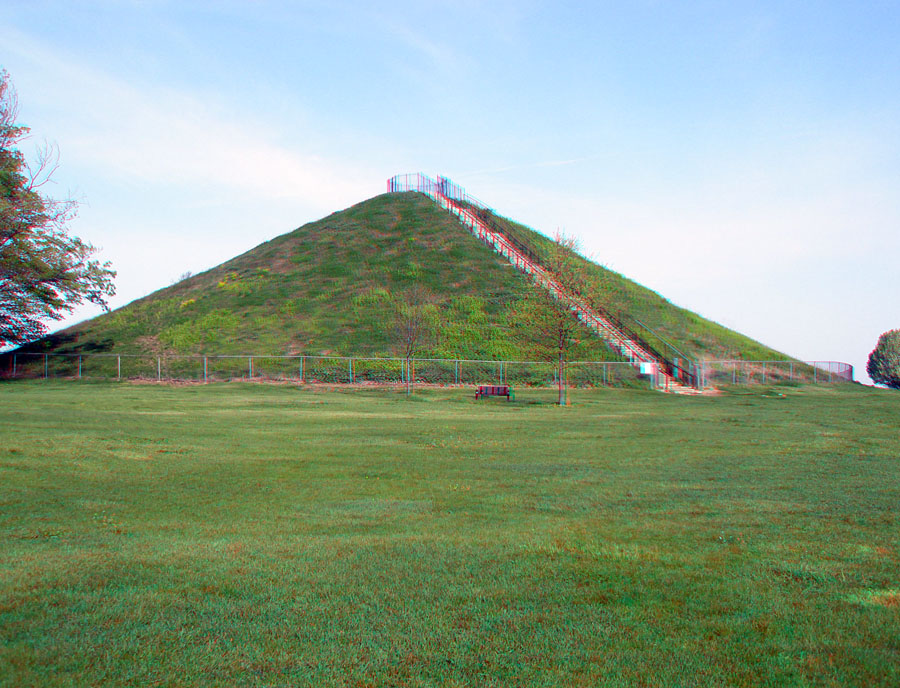
The information below was transcribed from a photograph of an old display at Miamisburg Mound. The original sign was posted by the Ohio Historical Society. The sign read:
"Miamisburg Mount, the largest conical earthwork in Ohio. Originally was sixty-eight feet high with of diameter of three hundred feet. One excavating attempt in 1869 reduced the height to the present sixty-five feet. The mound was then partially investigated by means of a vertical shaft which extended from he top to the base and connected with two horizontal tunnels. The exploration revealed on burial eight feet form the the top containing a bark-covered skeleton and a vault twenty-eight feet lower that was surrounded by logs but without a burial. Along the sides of the vertical shaft were found various layers of ashes and stones, implying that the mound was built in several stages. The earthen structure, however, has never been systematical excavated."
"The conical shape, the types of burials, and the absence of associated earthworks that the Miamisburg Mound was the work of Adena Indians, a prehistoric grout that lived in the Ohio Valley between 100 B.C. and 400 A.D. These people were the first in this area to domesticate plants for food, to settle in fairly permanent villages, and to make pottery. An important part of their way of life was the proper burial of the dead in graves that were covered with earth mounds, such as this one."
Revised information from archaeological investigations of the surrounding area suggest that it was constructed by the prehistoric Hopewell Culture Indians (or Adena Culture, within a time period between 800 B.C. to 100 A.D.